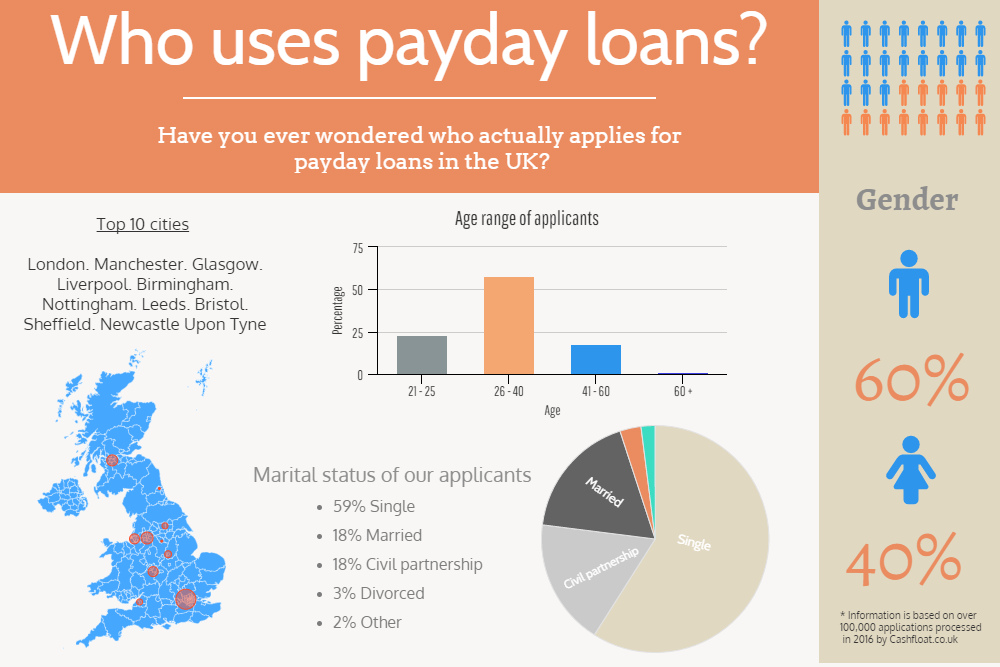As explained within the committee’s hearing memo, numerous lawmakers are worried that “payday and car-title loans may be bad for consumers” and they “force people who are currently struggling economically and underbanked into even even worse circumstances.” Some members of the committee expressed their support for the Veterans and Consumers Fair Credit Act (H.R. 5050), which would impose a national 36 percent annual percentage rate cap on interest and allow the Consumer Financial Protection Bureau to take punitive enforcement action against lenders that exceed this cap to fix this supposed problem.
Whilst it’s constantly advisable that you give attention to enhancing the everyday lives of economically strapped consumers, most of the hearing ignored fundamental economics and exactly how the proposed rate of interest caps would further damage bad customers by most likely shutting them away from use of legal credit entirely. The expenses of running a storefront, spending employees, the expense of money, and also the price of bad debts” in addition to simple fact that “lenders must charge a cost that allows them to show a revenue. as past CEI research and several scholastic research reports have shown, a higher-than-normal rate of interest for a little buck loan is practical when contemplating the “fixed expenses of operating any business—including”
Furthermore, as CEI Senior Fellow John Berlau has argued:
Many states have actually imposed APR restrictions of 36 per cent or reduced. While that could seem high, the word that is key yearly. Divided in to 26 two-week durations, the typical extent for many pay day loans, which means that payday loan providers could just charge $1.38 on that loan of $100.
Further, the Federal Deposit Insurance Corporation (FDIC) estimates that 30 million People in america are underbanked or unbanked and Pew analysis has unearthed that 12 million households utilize small-dollar loans each to make ends meet year. Another research from scholars at the Federal Reserve and George Washington University has revealed that loan providers would need to provide $2,600 simply to break even in the event a 36 % price limit had been to get into effect. A great deal for a loan that is small-dollar.
Establishing such arbitrary restrictions on rates of interest would truly place loan providers away from company and give a wide berth to an incredible number of both middle income and struggling Americans from getting available and credit that is affordable.
The hearing also centered on the training of FinTech-bank partnerships in addition to concern that non-bank loan providers utilize these partnerships “to export high cost loans, such as for example small dollar вЂpayday’ loans into states with reduced rate of interest caps.”
Just defined, a FinTech-bank partnership is where a FinTech firm that is financial a bank come right into a small business contract and combine and leverage their abilities to increase their array of services and products, especially loans.
Whilst not specially efficient, this training happens to be driven by the not enough a charter that is federal FinTech companies. devoid of a charter that is federal these banking institutions susceptible to different state rate of interest caps, placing them at a competitive drawback against banking institutions that will export loans and instruments like charge cards during the interest levels of these house states.
But bank partnerships have actually notably filled this gap and given to innovation in credit. Not  just do these partnerships offer use of credit to significantly more than 160 million People in america, they even assist people who for assorted reasons are excluded through the bank operating system.
just do these partnerships offer use of credit to significantly more than 160 million People in america, they even assist people who for assorted reasons are excluded through the bank operating system.
As chronicled by Rodrigo Suarez in BankInnovation:
Here are some successes that are notable. Earlier in the day this season, Ally announced a partnership with Better to introduce a electronic mortgage platform. TD Bank’s partnerships with Kasisto, Hydrogen, as well as others, have assisted the lender catalyze its innovation efforts. Goldman Sachs isn’t only checking out partnerships, they’re going one step beyond and acquiring fintech startups to fold into its digital bank, Marcus. First nationwide Bank of Omaha recently established its innovation lab, in component, to be more beneficial at partnering with fintech startups. Axos Bank partnered with N26 and Metropolitan Commercial Bank partnered with Revolut because of their particular U.S. launches.
There clearly was additionally significant conversation at the hearing over recent proposals because of the workplace regarding the Comptroller for the Currency while the FDIC that will explain a few of the ambiguity into the light regarding the court ruling in Madden v. Midland Funding. The Madden situation caused great doubt by governing that in some cases, loans downered down to non-bank loan providers might be susceptible to the interest price caps of states apart from where in actuality the loans were initially made.
While Chairwoman Maxine Waters (D-CA) lambasted the proposals, Democrats seem divided from the presssing problem and there might be room for bipartisanship. In reality, Chairman associated with the Subcommittee on Consumer Protections and banking institutions Gregory Meeks (D-NY) cosponsored legislation by then-Vice Chairman (and today Ranking Member) Patrick McHenry (R-NC) in 2017 that will have codified the legality of bank partnerships.
It would appear that the committee will talk about this subject once more to some extent two associated with “Rent-A-Bank Schemes and New Debt Traps” show later on this thirty days. Ideally we’ll see less explore capping interest levels or bank that is banning and much more action toward ensuring use of credit for accountable customers. Keep tuned in.